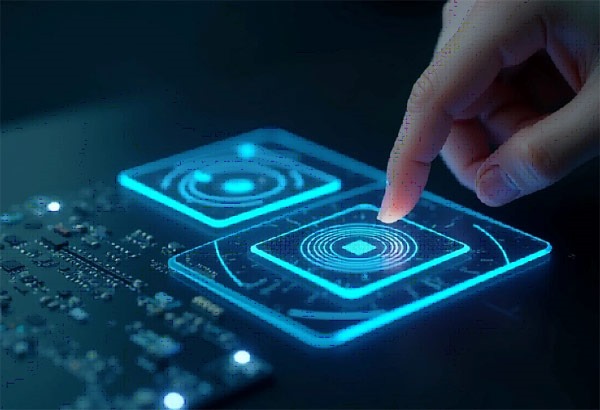The realm of embedded systems presents unique challenges and opportunities for user interface (UI) design.
As devices become more sophisticated and user expectations evolve, designers and developers must push the boundaries of creativity and technical innovation to create compelling, efficient, and intuitive interfaces. This article explores cutting-edge approaches to UI design in embedded systems, highlighting novel techniques that are reshaping the landscape of embedded user experiences.
Embracing Minimalism in Constrained Environments
One of the most impactful trends in embedded UI design is the embrace of minimalism. This approach isn't just about aesthetic preferences; it's a practical response to the constraints of embedded systems. By stripping interfaces down to their essential elements, designers can create UIs that are not only visually appealing but also highly efficient in terms of memory usage and processing requirements. This minimalist philosophy extends beyond visual design to interaction design, where simplified user flows and reduced input complexity can significantly enhance the user experience on devices with limited input capabilities. Tools likeSquareLine Studio are particularly adept at helping designers create these streamlined interfaces, offering features that optimize UI elements for performance without sacrificing visual appeal.
Adaptive Interfaces for Diverse Use Cases
Embedded systems often need to function in a wide range of environments and use cases. Innovative UI designs are addressing this challenge through adaptive interfaces that can dynamically adjust based on context. These interfaces might change their layout, color scheme, or interaction model based on factors such as ambient light, user proximity, or even the device's physical orientation.SquareLine Studio'stools for creating flexible layouts are particularly useful in this context, allowing designers to create UIs that seamlessly adapt to different scenarios.
Leveraging Haptics for Enhanced Interaction
As embedded devices become more integrated into our daily lives, designers are exploring new ways to create rich, multi-sensory interactions. Haptic feedback is emerging as a powerful tool in this arena. By incorporating subtle vibrations or texture sensations, UIs can provide non-visual cues that enhance usability, especially in environments where visual attention might be limited. This approach is particularly valuable in automotive interfaces, wearables, and industrial control systems where tactile feedback can improve safety and efficiency.
Gesture-Based Interfaces for Natural Interaction
Traditional button-based interfaces are giving way to more natural, gesture-based interactions in many embedded systems. This shift is driven by advances in sensor technology and machine learning algorithms that can accurately interpret complex gestures. From simple swipe controls to more elaborate motion-based commands, gesture interfaces are opening up new possibilities for interaction, especially in devices where screen real estate is at a premium or where hands-free operation is desirable.
Voice User Interfaces in Embedded Systems
The integration of voice user interfaces (VUIs) into embedded systems is another area of rapid innovation. As natural language processing capabilities improve and become more efficient, even relatively simple embedded devices can offer sophisticated voice-controlled interfaces. This trend is particularly transformative for devices that users interact with in hands-busy or eyes-busy scenarios, such as in-vehicle systems or smart home devices. Designers are exploring ways to create hybrid interfaces that seamlessly blend voice commands with traditional visual and touch-based interactions.
Augmented Reality Overlays
Augmented Reality (AR) is no longer confined to high-end mobile devices. Innovative embedded UI designs are incorporating AR elements to provide contextual information overlays in real-time. This approach is particularly powerful in industrial and medical applications, where AR can provide crucial data or guidance without obstructing the user's view of the physical world.
Emotional Design in Embedded Interfaces
As embedded systems become more integrated into our daily lives, there's a growing focus on creating interfaces that forge emotional connections with users. This approach goes beyond mere functionality to consider how the UI can evoke positive feelings and create a sense of personality. From playful animations that respond to user actions to interfaces that adapt their tone based on usage patterns, emotional design is adding a new dimension to embedded UIs. This trend is particularly evident in consumer devices like smart home controls and wearables, where user engagement and long-term adoption are crucial.
Biometric Integration for Personalized Experiences
Advancements in biometric sensors are enabling new forms of personalized UI experiences in embedded systems. Fingerprint sensors, facial recognition cameras, and even heart rate monitors are being integrated into devices to create interfaces that automatically adapt to individual users. This technology allows for seamless authentication, personalized settings, and even mood-responsive interfaces. Designers are exploring how to balance the power of these personalized experiences with privacy concerns, creating UIs that feel tailored and secure without being invasive.
Sustainable UI Design for Embedded Systems
As environmental concerns become more pressing, innovative UI design for embedded systems is increasingly focusing on sustainability. This approach considers not just the energy efficiency of the interface itself, but also how the UI can encourage sustainable use of the device. For example, interfaces that visually represent energy consumption can nudge users towards more efficient device usage. Additionally, designers are exploring how UI elements can be optimized to reduce the overall power consumption of displays, a crucial consideration for battery-powered devices.
Conclusion
The field of UI design for embedded systems is at an exciting crossroads of technological innovation and creative design thinking. By embracing minimalism, adaptivity, and multi-sensory interactions, designers are creating interfaces that are not only more efficient and usable but also more engaging and emotionally resonant. As we look to the future, the integration of technologies like AR, voice control, and biometrics promises to further revolutionize how we interact with embedded systems. Tools likeSquareLine Studio are evolving alongside these trends, empowering designers to push the boundaries of what's possible in embedded UI design. The challenge moving forward will be to balance these innovative approaches with the fundamental constraints of embedded systems, creating interfaces that are both cutting-edge and reliably functional in the diverse and demanding environments where embedded systems operate.

